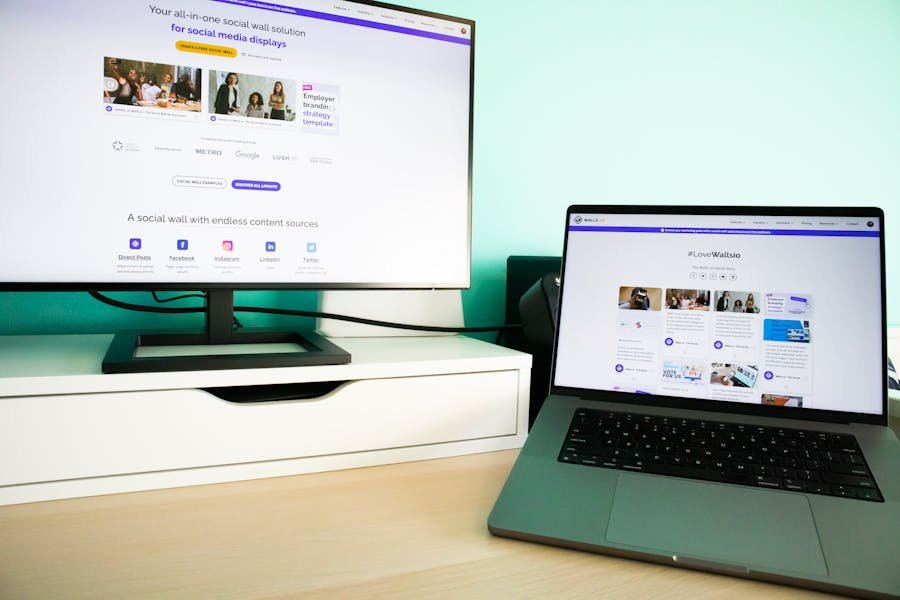
Digital marketers wield a surprising amount of power. They capture imaginations and stir up desires, helping consumers find products that suit their needs and gel with their identities. With such power comes the responsibility of safeguarding the data prospects — and customers entrust them whenever they sign up for a mailing list or make a purchase.
The following guide will introduce you to the risks and responsibilities digital marketing campaigns entail. More importantly, it offers practical advice on strengthening your cybersecurity posture and protecting your most valuable assets.
The Importance Of Securing Your Marketing Campaigns
Every successful digital marketing campaign depends on and generates a lot of data. Engagement strategies like getting users to sign up for your newsletter or fill out a survey collect data on people’s demographics, hobbies, preferences, etc. This data then serves as the basis for ad campaigns, personalized emails, and other targeted marketing efforts whose focus helps them achieve high success rates.
However, such data isn’t only valuable to marketers. Cybercriminals covet the personally identifiable information, valid emails, account credentials, and proprietary information you store as well. Access to your customer email database lets them endanger thousands of people with phishing emails. Moreover, seizing customers’ financial and personal information in a data breach can result in identity theft and financial fraud that ruins lives and leaves you culpable.
The consequences of these underhanded activities are multi-faceted and challenging to recover from. On the one hand, you’ll experience quantifiable financial strain caused by downtime, damage control, and reparations. More importantly, the damage such a breach of trust causes to your brand reputation might not be reversible. On top of all this, you may face legal repercussions since you failed to comply with regulations and industry standards.
What Measures Should You Take?
While the threats targeting digital marketing campaigns are serious and growing, adopting a comprehensive cybersecurity strategy can improve your resilience and mitigate much of the risk. Here are the steps you can take to bolster your cyber defenses.
Assess and optimize data management strategies
No overarching protection strategy can be effective without data management. That is, understanding what data you’re collecting and why. Identify all the sources (your website, social media, CRM, etc.) and whether they share data.
Next, assess whether the collected data aligns with your broader campaign goals. This will help you identify gaps while also making it possible to limit collection to relevant data and reduce the fallout of a potential breach.
From there, you can start developing a policy that outlines the scope and standards of data storage. Put a member of your marketing team in charge of this and perform regular audits.
Vet your tools and services
Digital marketing is highly dependent on third-party services whose commitment to cybersecurity you can’t influence. Each may have distinct vulnerabilities that threaten your marketing efforts and data security in different ways.
For example, ad platforms with inadequate anti-bot measures make your campaigns vulnerable to ad fraud, wasting ad spend. Misconfigured analytics tools may expose traffic information, conversion rates, and valuable customer behavioral data. CRMs with poor data storage practices can expose sensitive customer information. Meanwhile, poor API security enables unauthorized access, leading to stolen or altered data.
Only use marketing tools and services with a proven track record and strong commitment to upholding high cybersecurity standards.
Conduct employee training
While digital marketers are more tech-savvy than the average person, they’re still susceptible to the sophisticated social engineering tactics cyber criminals employ. Phishing campaigns are particularly effective at deceiving recipients into giving up their account credentials. Attaining these lets attackers access sensitive systems and the information stored within while bypassing otherwise sophisticated security measures.
Bringing your marketing team up to speed on the latest digital threats is paramount. So is conducting follow-up training sessions to keep everyone’s skills sharp.
Strengthen account access
Without safeguards, a single exposed account can become a major privacy and security issue. A comprehensive access protection approach requires two effective measures.
Proper password implementation is crucial. Use the best password manager to create complex, unique passwords for everyone’s accounts. Complexity ensures passwords can’t be cracked through brute force. Even if someone manages to steal them via other means, uniqueness guarantees other accounts won’t be affected.
Two-factor authentication protects compromised accounts by asking users who try to sign in from unknown locations to input a code. Since that code is tied to each team member’s phone or authenticator, they can change the affected password and regain full account ownership.
Have a robust encryption and backup strategy
Threats like ransomware can lock up your systems and files, halting campaign development unless you pay up. Regularly and automatically backing crucial marketing campaigns and user data up is an effective countermeasure. Follow the 3-2-1 strategy to retain file access and integrity at all times.
Encryption is an indispensable failsafe and part of any robust backup effort. It makes the contents of files unreadable without the right encryption key, ensuring that anyone without proper authorization who acquires information on leads or campaign access can’t misuse it.
Provide a safe environment for remote team members
Since most digital marketing resources and tools are available online, you and your team aren’t confined to the office. While being able to contribute from anywhere boosts morale and productivity, you need to keep the resulting risks in mind.
Specifically, accessing marketing-related files and customer databases through unsafe public Wi-Fi may expose their contents if that connection is being monitored. Make using a VPN a must for remote employees, as it encrypts their internet connection and prevents such attacks.
To balance security and speed, consider enabling split tunneling—this allows non-sensitive traffic to bypass the VPN, improving performance while keeping critical data protected. VPNs also help maintain online privacy and enable testing campaigns in different geographical regions.
Conclusion
The threat landscape keeps evolving, and attackers are finding new ways to either overcome technical safeguards or exploit our human vulnerabilities. Can marketing campaigns remain secure in such an environment? The answer remains a resounding yes if you commit to the right tools and practices, vigilance, and continuous improvement.
